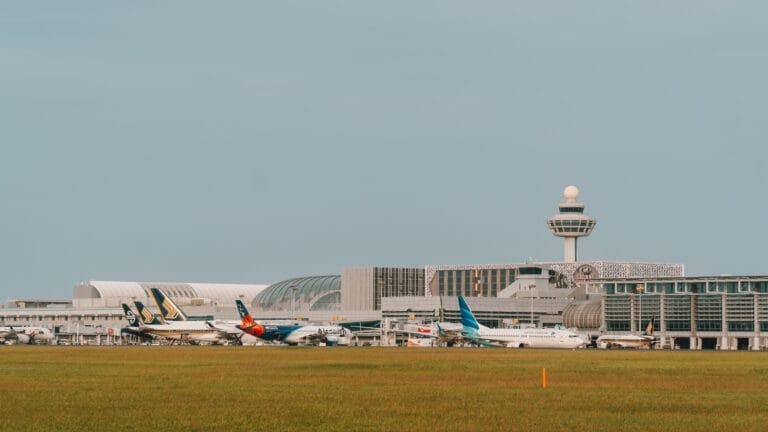Singapore’s Changi Airport has emerged as a pivotal force in the surging Asia-Pacific (APAC) airfreight landscape, closing 2024 with a 14.6 percent surge in airfreight throughput to 1.99 million tonnes. This robust growth, bolstered by strong recovery in the electronics sector and stronger cargo flows between Singapore and China, and the United States, has positioned Changi as Southeast Asia’s busiest cargo hub and the ninth-largest globally by international volume.
But beyond the numbers, Changi Airport is preparing for a new era of expansion, innovation and strategic positioning to capitalise on a market projected to grow at a compound annual growth rate (CAGR) of 9.7 percent through 2030.
“The strength of our 2024 performance lies in our adaptability to shifting trade patterns and our close collaboration with the air cargo community,” said Jaisey Yip, vice president of the cargo business division at Changi Airport Group (CAG). “Our focus now is on reinforcing our fundamentals — operational excellence, strong connectivity and innovation — while building new competitive propositions for our customers.”
Anchoring global connectivity
With over 170 cities in its network and more than 20 airlines offering freighter services to nearly 45 destinations, Changi Airport’s strategic geographic location and extensive connectivity are cornerstones of its cargo success.
“Changi will continue to focus on increasing its connectivity to the world’s major economic centres, large consumption and production hubs, as well as key logistics gateways. Intra-ASEAN connectivity will be a top priority,” Yip noted, pointing to global businesses turning towards the region’s fast-growing markets. “This not only serves Singapore’s manufacturing sector by ensuring market access, but also strengthens our resilience against global trade disruptions.”
Changi has also been proactive in expanding long-haul and express networks. Notably, FedEx launched its first direct freighter service from Singapore to Anchorage in March 2025, and DHL Express completed a significant upgrade to its South Asia hub at Changi last year, boosting its sorting and scanning capacity by 40 percent and 30 percent respectively.
In October 2024, SF Express also opened its Singapore airside logistics centre in partnership with SATS, a move that significantly improved on-airport processing speed.
“These collaborations with global express integrators reinforce our commitment to building a vibrant air cargo ecosystem at Changi,” Yip emphasised.
Infrastructure advantage
Much of Changi’s competitive edge lies in its infrastructure. The Changi Airfreight Centre (CAC), spanning 70 hectares, plays a critical role in enabling efficient, high-volume cargo operations. As a free trade zone with direct airside access, CAC facilitates swift transhipment and end-to-end integration across logistics players, ground handlers and customs authorities.
In March 2025, Changi Airport opened Changi Nexus One, a cutting-edge addition to CAC designed to streamline cargo handling further.
“Changi Nexus One enhances capacity and operational agility, especially for time-sensitive shipments,” Yip said. “It’s a part of our broader strategy to offer scalable infrastructure that evolves with market demands.”
This commitment extends to digital transformation. A recent initiative — the truck dock slot booking (TDSB) system — was rolled out by Changi’s ground handlers to manage export cargo deliveries more efficiently. With over 340 users onboarded, the system has reduced driver waiting times by up to 30 percent.
“Efficiency on the landside is just as important as in the air. The TDSB has been a game-changer in transforming how cargo is lodged at the terminals,” said Yip.
Smart operations
Changi’s push towards automation and digitalisation is another pillar of its airfreight strategy. Trials of autonomous vehicles for airside operations have begun, with cargo operations next in line. The airport is also developing a smart security checkpoint system leveraging artificial intelligence and biometric recognition to improve cargo movement speed and security at CAC.
Singapore’s Immigration & Checkpoints Authority (ICA) is also playing a role by automating import cargo clearance processes. A digital submission system now allows 95 percent of import cargo vehicles to be cleared without paper documents, slashing clearance time by 30 percent to under five minutes per vehicle.
“These initiatives show how cross-agency collaboration is critical in raising our efficiency benchmarks,” Yip said.
e-commerce engine
One of the clearest demand drivers for airfreight is e-commerce. Globally, e-commerce accounts for more than 20 percent of air cargo, and that share is expected to rise to 30 percent by 2027, according to McKinsey. Despite headwinds like the US’s removal of the de minimis exemption for small packages below US$800 from China, APAC’s e-commerce growth remains unabated.
Yip highlighted the growing trend among e-commerce players shifting towards direct-to-consumer (DTC) fulfilment and demand-pull logistics strategies.
“Changi is well-positioned to support this growth,” said Yip. “We are working with logistics partners and authorities to offer purpose-fit warehousing, seamless customs procedures and data-driven operations.”




